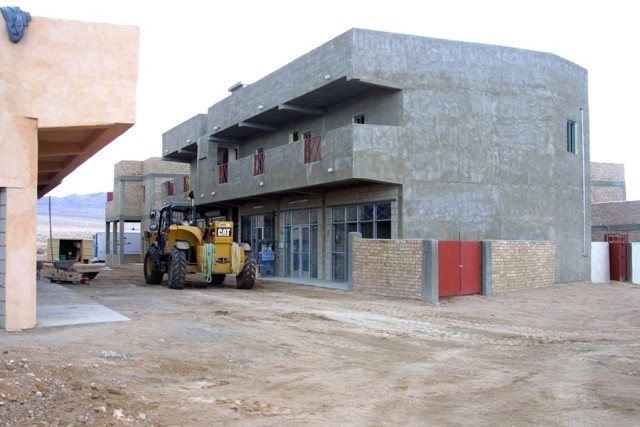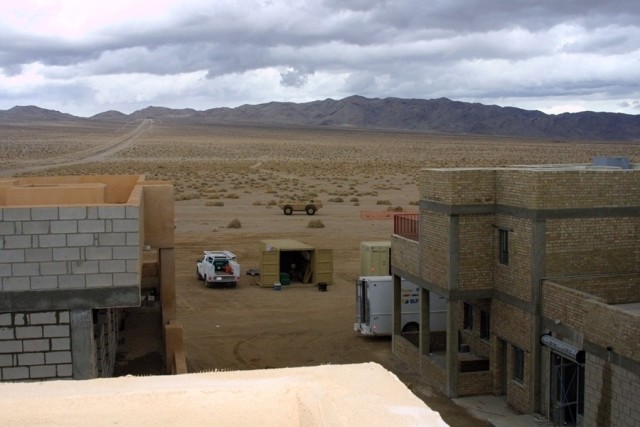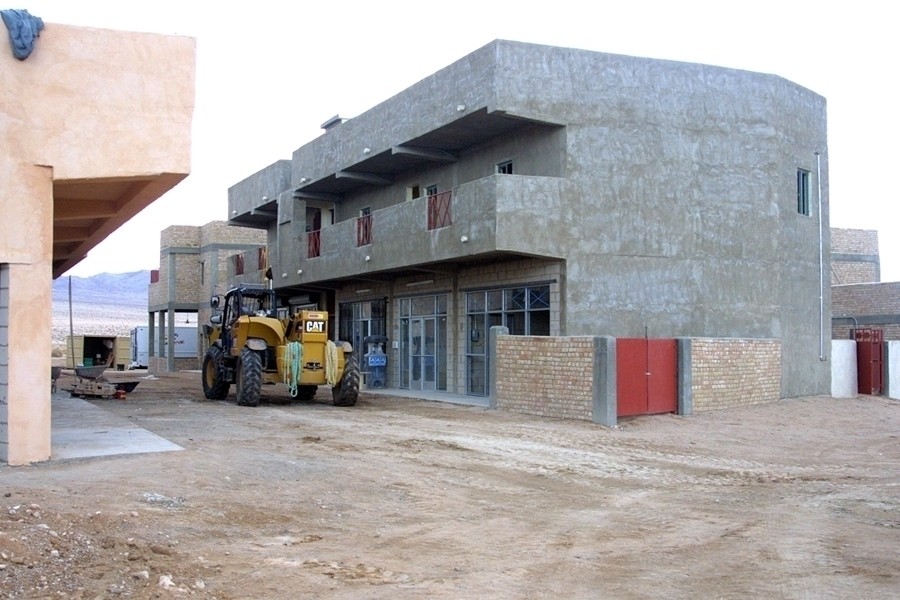In the middle of the Mojave Desert at Fort Irwin, Calif., sits a simulated Iraqi village built by the Army Corps of Engineers Los Angeles District.
Col. Thomas H. Magness IV, commander for the L.A. District, said a request to build the village came from the organization charged with overcoming the threat of improvised explosive devices. "The Joint IED Defeat Organization has asked us to create a training environment that will allow them to test some new technology that will help defeat these roadside bombs."
The village, known on Fort Irwin by the Iraqi name Medina Wasl, will ultimately have 13 buildings. The Corps awarded the contract for the project in August 2006. Construction for Medina Wasl began in February 2007. The village simulates a developed section of Baghdad, complete with shops, apartments and light industrial areas.
Soldiers who use the village can better train for situations they will be likely to encounter during an Iraqi deployment. The 'training environment' mentioned by Magness consists of buildings designed and built to Iraqi construction standards.
About 5,000 Soldiers per month use the facilities on Fort Irwin, officials said. There are 10 rotations a year at the National Training Center there. Each rotation consists of a week preparing equipment, two weeks of training and then a week for redeploying equipment and personnel back to home station. The villages being built by the Corps will add to the realism of training for Soldiers at NTC.
"When we first had the villages, we bought sheds from Shed World," said John Wagstaffe, public affairs officer for the base. "Although not terribly realistic, it was a beginning. Then we moved to long shipping containers. This was followed by putting stone siding on the shipping containers. At each step, the villages took on a more realistic look."
The buildings are not the only way the NTC approximates Iraq in California for Soldiers' training. Actors and role players add to the realism of the simulation by portraying an assortment of Iraqi villagers. This allows the NTC to better replicate the "sounds and smells" of Iraq.
"The footprint for the village came from actual satellite imagery of Baghdad," said Capt. Seth Henson, acting resident engineer at Fort Irwin. "The L.A. district worked with [the Corps' Engineer Research and Development Center] to ensure the construction design was authentic to Iraqi standards. Everything is authentic to the dimensions. Parsons, the contractor, has extensive experience building in Iraq. They contacted their experts in Iraq. They had their people bring back samples from Iraq to make sure we matched what we were building."
The JIEDDO can use the unique construction in order to better understand how developing technology can be used to defeat improvised explosive devices currently being used in Iraq.
The JIEDDO was created in October 2003 by the Army Chief of Staff to organize Army efforts to eliminate IED threats, recommend best available responses to commanders and coordinate testing, development and fielding of selected devices and technology.
"When completed, the village will serve two primary purposes for JIEDDO," said Christine DeVries, public affairs officer for JIEDDO. "First, it is a training venue for counter-IED, search, escalation of force, cultural awareness and combat patrol training and will be used up to 200 days per year by Soldiers preparing for deployment. Second, because of the realistic Iraqi construction techniques and materials, it will serve as a testing platform for counter-IED technologies that are being investigated for use."
Even with the attention to detail given by the Corps and the contractors, not everything will be just like Iraq. Henson said the construction materials and basic style will emulate Iraqi techniques. However, because Fort Irwin is on seismically active land, the buildings needed some stabilization.
"We're in a Seismic Zone Four here in Fort Irwin. That's the highest level," said Randi Elder, project manager for the Fort Irwin projects. "For the Iraqi village, even though we're simulating the Iraqi construction, we still have some reinforced columns in the corners because of the liability issues that we have."
One of the main issues involved safety. It wouldn't make sense for the Corps to build a training area that would fall in on Soldiers as they were training. Neither would it be sensible for the Corps to place contractors in danger during construction. Elder said the Corps is very safety conscious.
"We're doing very well with safety," Elder said. "The contractors we have out here are excellent. We always have pre-construction meetings to discuss safety and environmental concerns."
Henson said they have completed more than 186 days on the job without a safety issue or lost-time accident. Fort Irwin Soldiers plan to get much use out of the new village when it is complete. Currently, they are training at another facility on base.
"The villages are critical to giving soon-to-deploy Soldiers training in how to fight both the kinetic and non-kinetic battle in Iraq or Afghanistan" Wagstaffe said. "It is the next best thing to actually training in Iraq or Afghanistan. We learned long ago when the NTC was founded that you must train as you will fight, with realism in every aspect of the training."




Social Sharing